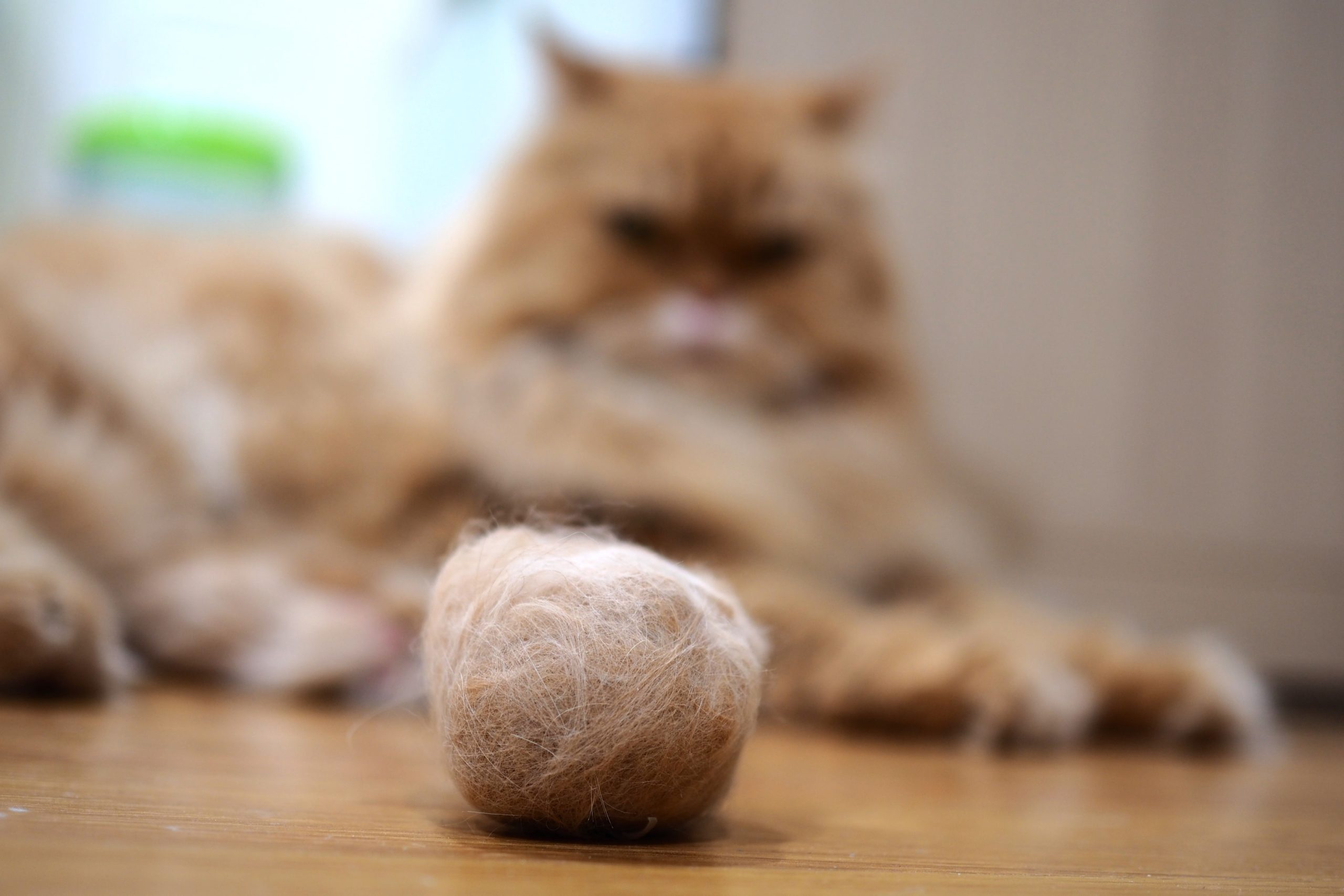
Coughing, hacking, gagging, retching, puking, vomiting, regurgitating – there are many words used to describe a cat producing a hairball! However, some of these descriptors are inaccurate, and differentiating what the cat is actually doing can be critical if there is a medical issue going on.


Hairballs: Hairballs result from the accumulation of hair in the stomach. Cats swallow hair when they groom, the hair sticks together, and then it either moves along into the intestines and is passed out in the feces or is vomited back up and out. The production of a hairball is truly vomiting, not coughing.
Coughing: Coughing comes from the respiratory tract, specifically the trachea, lower airways, and lungs. Things that can cause coughing include asthma, pneumonia, parasites, heart disease, and more. Hairballs cannot cause coughing. A coughing cat will often be crouched down with their neck extended, and sometimes will move the head from side to side. They may cough so hard they have a gag or retch at the end, and may produce some mucus or fluid.
Vomiting: Vomiting comes from the stomach. Some causes of vomiting include hairballs, eating something that upsets the stomach, metabolic disease such as kidney disease, and many more. The cat will often start sitting up straight, maybe with their mouth open and tongue stuck out, and make a repeated “urk” sound along with abdominal contractions, finally resulting in leaning forward and vomiting up the stomach contents. Vomiting may produce hairballs, food, or just liquid.
Regurgitation: Regurgitation is a more passive action that comes from the esophagus. This is uncommon in cats. When regurgitating, there are no abdominal contractions, no nausea. They simply lean forward and produce material from the esophagus, which may be food or fluid or both.
Sometimes it can be difficult to differentiate what a cat is doing, as these actions all have similarities. When a cat is in the vet clinic, it is quite unusual for them to demonstrate any of these behaviors for the vet to watch. It is very useful if you can get a video of your cat in the throes of their coughing/vomiting/other action. If we are unsure what the cat is doing, it can make choosing diagnostics and treatments challenging. Do we x-ray the chest looking for asthma, or the abdomen looking for a foreign object in the stomach? Do we treat with antibiotics, fluids, steroids, or anti-nausea medication? The more precise and specific we can be when discussing what is going on, the more likely we will be able to treat it successfully.
– Dr Ema Thigpin
